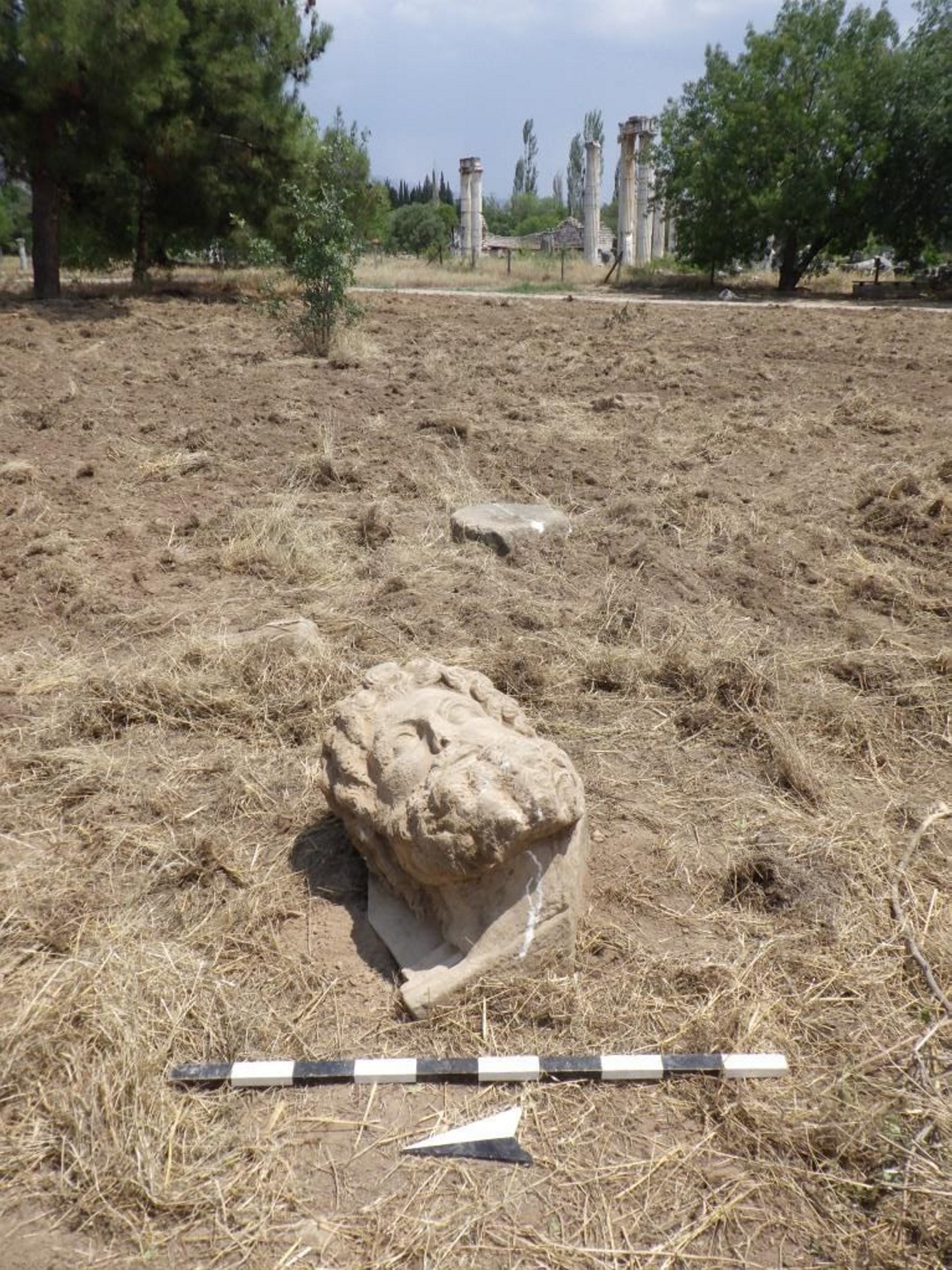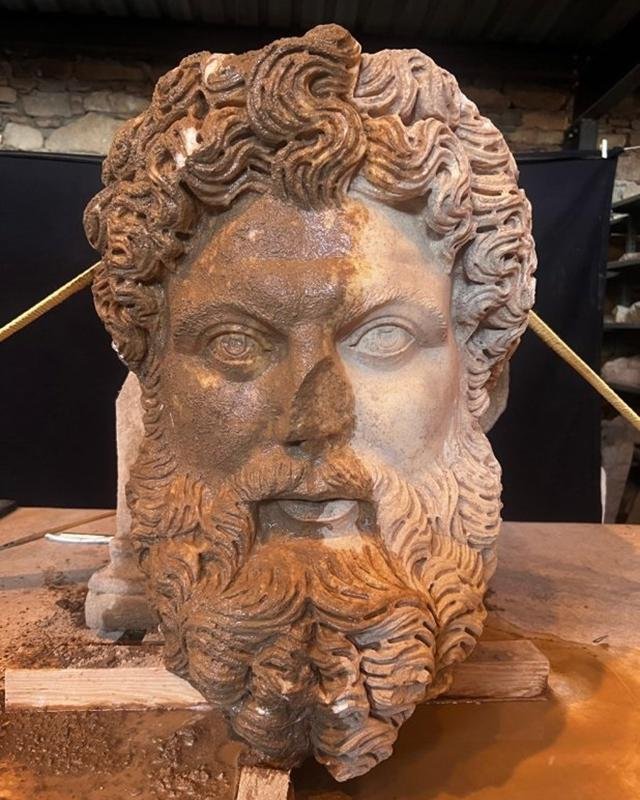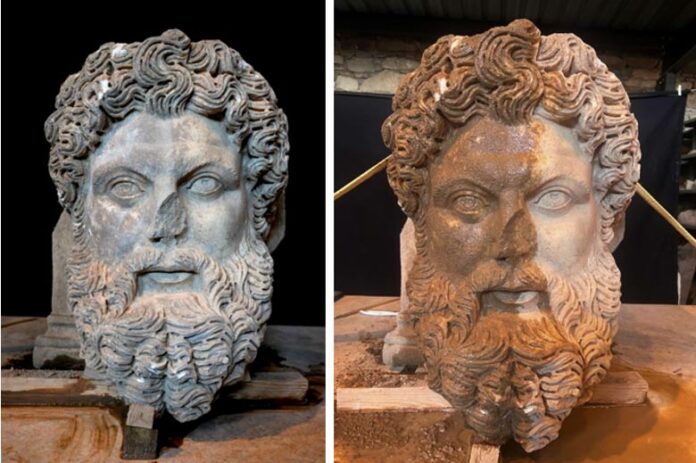A recent archaeological discovery in the ancient city of Aphrodisias has captured the attention of historians and art enthusiasts alike. Excavations near the Sanctuary of Aphrodite Aphrodisias have unearthed a bearded marble head believed to represent Zeus, the king of the gods in Greek mythology. This find adds to the rich tapestry of artifacts from Aphrodisias, a city renowned for its artistic and sculptural heritage.
The Historical Significance of Aphrodisias

Aphrodisias was a prominent Greek Hellenistic city located in the historic Caria region of Anatolia, Turkey. Named after Aphrodite, the Greek goddess of love, the city was a major cult center dedicated to her, with the Sanctuary of Aphrodite at its heart. During antiquity, Aphrodisias gained fame for its skilled artisans and sculpture schools, which produced and exported exquisite building facades and sculptures throughout the Hellenistic and Roman worlds.
Discoveries in Aphrodisias
Over the years, numerous full-length statues, trial pieces, and unfinished sculptures have been discovered in the region of the agora, highlighting the city’s rich sculptural tradition. These findings provide valuable insights into the artistic practices and cultural life of ancient Aphrodisias.
The Earthquake and Decline

Aphrodisias faced a major catastrophe in the early 7th century AD when an earthquake devastated the city. The destruction reduced Aphrodisias to a small fortified settlement centered around the ancient theatre, known as the Odeon. Despite this decline, the city’s legacy lived on through its remarkable artistic contributions.
The Recent Discovery
In a press statement by Mehmet Nuri Ersoy, Turkey’s Minister of Culture and Tourism, it was announced that recent excavations near the Sanctuary of Aphrodite Aphrodisias had uncovered a bearded marble head, part of an architectural console. Archaeologists have identified the head as a depiction of Zeus, the god of sky and thunder, who reigned as the king of the gods on Mount Olympus.
Minister Ersoy’s Statement

Minister Ersoy remarked, “The marble head, which reunited with the light of day after centuries, exhibits the splendor of Zeus, the most powerful and important god in Greek mythology.” The head, dating back to the 2nd or 3rd century AD, measures 66 centimeters in height and is carved from a single block of locally sourced medium-grained Aphrodisias marble.
Artistic Excellence
The marble head showcases the exceptional skill of Aphrodisias’ sculptors. “The magnificent drill work on the hair and beard belongs to a top Aphrodisias sculpture workshop. The sophisticated depiction of the powerful divine image gives the head a powerful effect,” added Minister Ersoy. This intricate craftsmanship underscores the artistic prowess for which Aphrodisias was renowned.
Conclusion
The discovery of the marble head depicting Zeus is a testament to the enduring legacy of Aphrodisias as a center of artistic excellence. As more artifacts continue to emerge from the ruins of this ancient city, they provide a window into the past, offering glimpses of the cultural and artistic achievements that once flourished in Aphrodisias. This latest find not only enriches our understanding of ancient Greek art but also highlights the historical significance of Aphrodisias in the broader context of the Hellenistic and Roman worlds.
